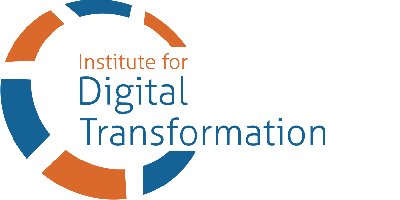In the era of break-neck technological advancements, artificial intelligence (AI) has emerged as a transformative force, disrupting various aspects of our lives. Chat GPT and other generative AIs have reached mainstream applications in marketing, education, and creative industries.
However, alongside its potential benefits, AI has also given rise to a growing divide within society. We need to examine its causes, implications, and the importance of addressing this issue to ensure a more inclusive and equitable future.
The AI divide refers to the gap between those who have access to and benefit from AI technologies and those who are left behind, lacking resources, skills, or opportunities to leverage these advancements. This divide encompasses multiple dimensions, including access to AI education and training, availability of AI tools and infrastructure, and the unequal distribution of the benefits derived from AI systems.
One cause of the AI divide is economic disparities as it is closely intertwined with existing economic inequalities. Access to AI technologies often requires financial resources, leaving economically disadvantaged communities at a disadvantage. Wealthier individuals and organizations can afford to invest in cutting-edge AI systems, giving them a competitive edge in various fields.
Another cause is the education and skills gap. AI technologies demand specialized skills and knowledge. Unfortunately, educational institutions and training programs have struggled to keep pace with the rapid advancements in AI, leading to a shortage of skilled professionals. This skills gap creates barriers for individuals from marginalized communities, exacerbating the divide.
Finally, data bias and representation are another cause of AI divide. AI algorithms are only as good as the training they receive with data. If the data used to train AI systems is biased or limited in its representation, the resulting AI models can perpetuate existing social inequalities. This bias can lead to discriminatory outcomes, further exacerbating divisions within society.
The growing AI divide presents far-reaching implications. One is that it has the potential to widen existing economic disparities. As AI becomes increasingly integrated into industries, those who lack access to AI technologies may find themselves marginalized and excluded from opportunities for employment, innovation, and economic growth.
In addition, if AI systems are not developed with inclusivity and fairness in mind, they can reinforce existing social injustices. Biased AI algorithms may discriminate against certain demographic groups, leading to unequal treatment in areas such as hiring, lending, and law enforcement.
Lastly, the AI divide can also have political implications, affecting the distribution of power and influence. Those who possess advanced AI technologies can harness their capabilities for strategic purposes, potentially shaping public opinion, elections, and policy-making processes.
These are the reasons why governments and the private sector alike need to address the growing AI divide. Governments, organizations, and policymakers should prioritize improving access to AI technologies and infrastructure, especially in under-served communities. Initiatives should focus on bridging the digital divide, providing affordable internet access, and ensuring the availability of AI tools and resources.
To reduce the skills gap, educational institutions, and training programs should incorporate AI into their curricula, making it accessible to students from diverse backgrounds. Scholarships and mentorship programs can also help individuals from marginalized communities enter AI-related fields.
It is also essential to prioritize ethical considerations and inclusivity in AI development. This involves diverse representation in AI research and development teams, thorough testing for bias, and transparency in algorithms’ decision-making processes. Regulatory frameworks should be established to ensure accountability and fairness in AI systems.
Moreover, governments, academia, and industry should collaborate to facilitate knowledge sharing and promote responsible AI practices. Encouraging open-source AI initiatives and fostering international cooperation can help mitigate the AI divide on a global scale.
The growing AI divide poses significant challenges to society, with implications for economic inequality, social justice, and democratic processes. Addressing this divide requires concerted efforts from various stakeholders, including policymakers, educators, technologists, and the general public. By prioritizing access, education, inclusivity, and ethics, we can navigate the evolving technological landscape and build a more equitable and inclusive future, where the benefits of AI are shared by all.
Originally published in the Manila Times.
Tag/s:Artificial IntelligenceBusiness TransformationCustomer ExperienceDigital Disruption





